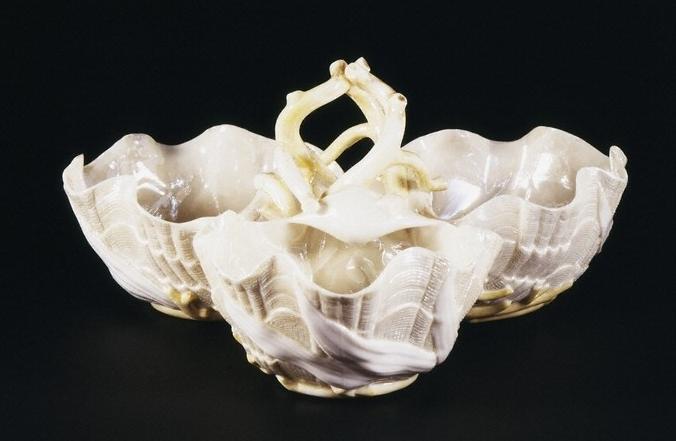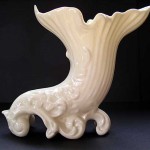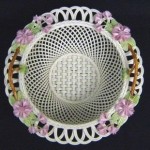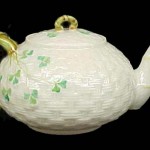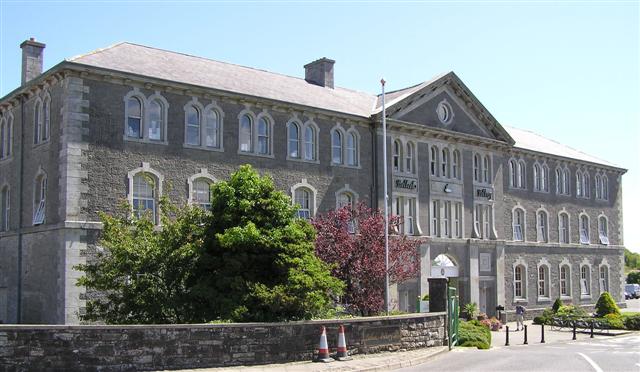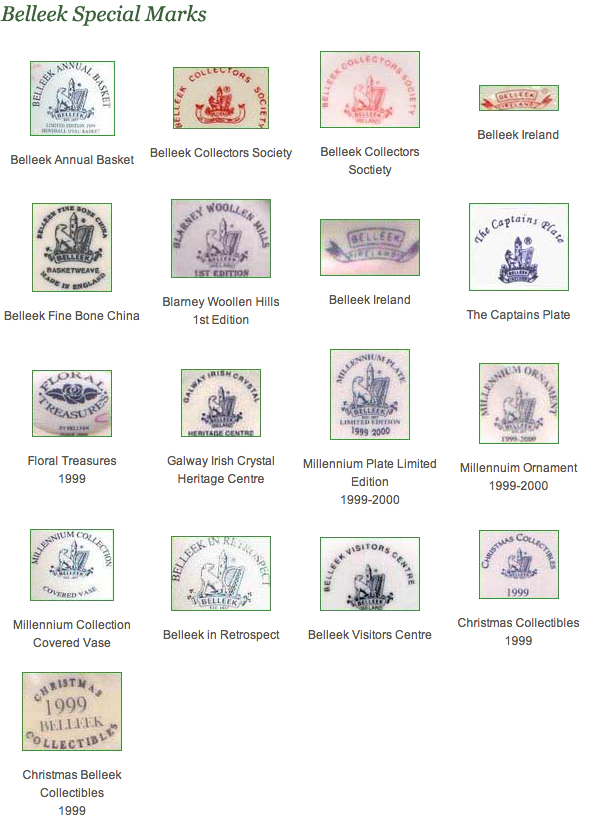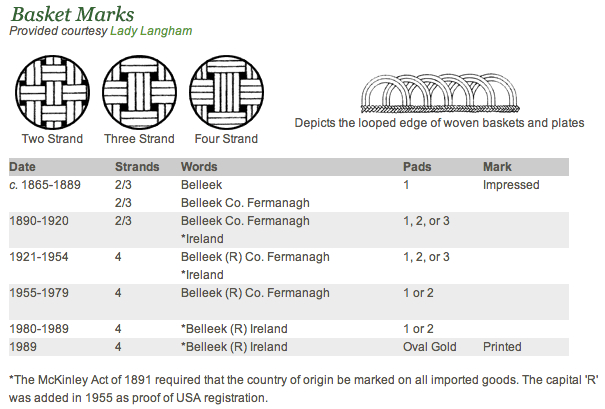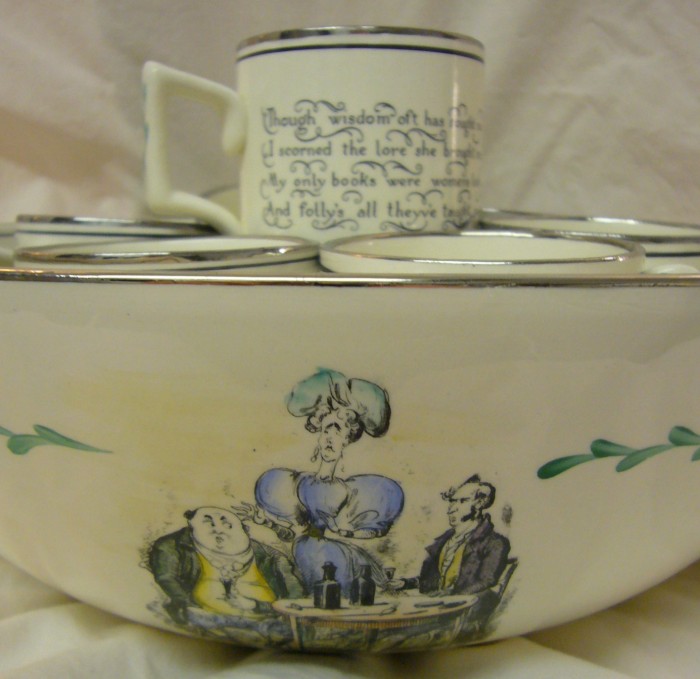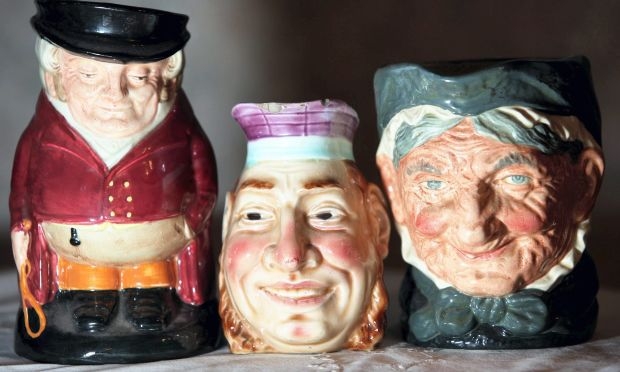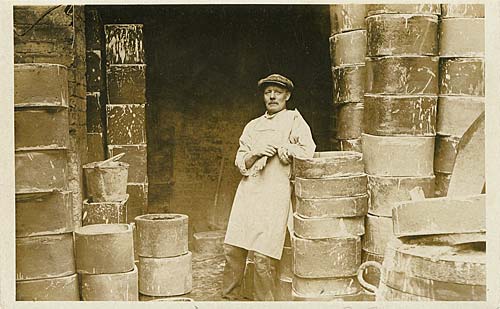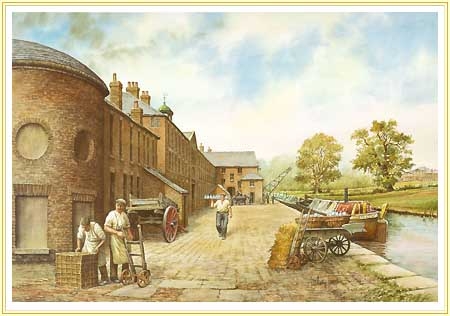Belleek Pottery Ltd is a porcelain company that began trading in 1884 as the Belleek Pottery Works Company Ltd in Belleek, County Fermanagh, in what was to become Northern Ireland. The factory produces porcelain that is characterised by its thinness, slightly iridescent surface and that the body is formulated with a significant proportion of frit.
History
Pottery in the region began around 1849, after John Caldwell Bloomfield inherited his father’s estate. Seeking to provide employment for his tenants, who had been affected by the Irish potato famine and, being an amateur mineralogist, he ordered a geological survey of his land. On finding that the area was rich in minerals, Bloomfield went into partnership with London architect Robert Williams Armstrong and Dublin merchant David McBirney. In setting up a pottery business, Bloomfield managed to get a railway line built to Belleek so that coal could be delivered with which to fire kilns.[2] Building started on the pottery in 1858. Initially starting with domestic products, it wasn’t until 1863 that small amounts of the Parian porcelain for which Belleek is famous for to this day, was successfully produced. By 1865, the prestige of the company had increased enough that its market included Ireland, England, the United States, Canada and Australia, and clients included the Prince of Wales, Queen Victoria and the nobility.
Belleek Marks
An Irish Wolfhound with its head turned back to face a Round Tower (believed to be Devenish Round Tower on Devenish Island in Lower Lough Erne). To the right of the Tower is an Irish harp. Below, two sprigs of shamrock border the ends of the banner carrying the word “BELLEEK”.
FIRST PERIOD BLACK MARK 1863 – 1890

Early pieces of parian leaving the pottery were either impressed with the word “BELLEEK” or “BELLEEK, CO FERMANAGH”. Others were impressed and marked with the Belleek 1st period mark. The color of the mark during this period was predominantly black but other colors were sometimes used, amongst them red, blue, orange, green and brown. Some pieces of Belleek also carry the British Patent Office registration mark, which gives the date of registration, not the date of manufacture.
SECOND BLACK MARK 1891 – 1926
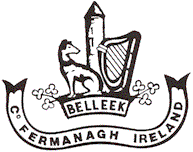
Belleek changed its mark to comply with the McKinley Tariff Act of 1891, requiring imports to the USA to specify the country of origin. A second banner was added below the first mark, carrying the words “CO FERMANAGH, IRELAND”. On occasions, particularly on Trays, both 1st and 2nd period marks can be found. Usually the 1st period mark is an impressed mark with a large 2nd period (black) mark. This leads me to believe that the large 2nd period marks were used on the earlier pieces and that later versions were scaled down.
THIRD BLACK MARK 1926 – 1946
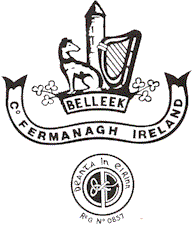
A stamp with the words “DEANTA IN EIRINN”
(made in Ireland) and the registered trademark number
0857 was added below the banner.
FIRST GREEN or FOURTH MARK 1946 – 1955
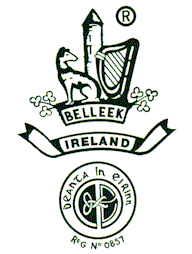
The mark remained the same but had a color change. SECOND
GREEN or FIFTH MARK 1955 – 1965
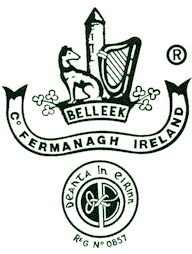
To identify that the Belleek mark was registered in the USA the letter “R” within a circle was added above the banner. Compare this with the fourth mark. It is exactly the same apart from the registration mark – a small (R) above the banner. This (R) is a very useful pointer – any piece of Belleek, including baskets, which have this letter are POST 1955.
THIRD GREEN or SIXTH MARK 1965 – 1981

The mark was reduced in size and the words “CO FERMANAGH” deleted, leaving “IRELAND” within a shortened banner.
FIRST GOLD or SEVENTH MARK 1980

The same as the Third Green, but another color change to Gold. Sometimes people get confused and think that this mark is a “faded” Black mark – if the (R) is above the harp it is seventh mark.
The current mark is Blue
Much small than other marks.

